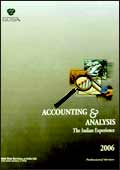 |
FAIR TRADE FOR ALL
HOW TRADE CAN PROMOTE DEVELOPMENT
By Joseph E. Stiglitz and Andrew Charlton
Oxford University Press
Pp: 315
Price: Rs 495 |
Shortcomings
of the existing platform for trade negotiations have spurred paralysing
debates that offer little meeting ground between the ideologies
of free trade and anti-globalisation. Stiglitz and Charlton's
Fair Trade For All, attempts to offer a prescription that addresses
the widening schism between the developing and developed countries.
The solution mooted by the Nobel prize-winning Stiglitz recognises
the design fault in the framework, WTO, whose pedigree has meant
little for addressing the inequality in development between the
North and the South. The book effectively captures the events
leading up to the concretisation of this divide-the Uruguay Round,
etc.-which sowed the seeds of disenchantment for the African countries.
This was followed by the American and EU resistance to reduction
in their agriculture subsidies.
Stiglitz has lucidly argued that unless the
negotiations marry trade liberalisation with development, trade
talks would be an exercise in futility. In other words, the underlying
theme of trade liberalisation based on comparative advantage between
nations needs to be given a partial burial. Stiglitz has enumerated
cases where the concessions offered by the developed world have
meant little compared to the commitments extracted from the developing
world. To prevent such abuse, clearly, there is need for greater
research and analysis of trade data with a redefined, developing-country
perspective. The prescription underscores the need to understand
the sensitivities of individual countries and provide a 'soft
landing' to developing countries embracing a more liberal trade
regime, as well as to developed countries lowering their trade
barriers. The key aspect of this prescription is that the larger
part of the benefits should accrue to the poorer countries.
The authors have suggested radical measures
in this regard, including that all WTO members commit themselves
"to providing free market access in all goods to all developing
countries poorer and smaller than themselves". Surely, such
proposals are extremely ambitious, as they require political momentum
of a high order to see them through. And this is unlikely to come
through, since trade issues cannot be divorced from electorally-sensitive
concerns such as employment. Alongside their attempt to redistribute
the development and growth gains arising out of trade pacts, the
authors have discussed in detail the attendant costs of adjustment
that developing countries will face as they go in for further
trade liberalisation.
Overall, the authors have attempted a future-proof
prescription that requires a stiff dose of optimism. But then,
as it is fairly recent that developing countries have come together
to strengthen their voice on the 'unfairness' of the trade talks,
such works of courage and insight are definitely the need of the
hour.
 |
ACCOUNTING & ANALYSIS
THE INDIAN EXPERIENCE
GDSIL
Pp: 495
Price: Rs 3,500 |
How a company reports
its annual accounts depends not so much on accounting rules as
the management's interpretation of those rules. The auditors only
look for glaring deviations from accepted norms, and take pretty
much else on face value. That interpretation of rules varies widely
from company to company shouldn't surprise anyone. Different companies
have different 'compulsions', dictated by their performance in
consumer markets and stock markets. Global Data Services of India
Ltd (GDSIL) has been doing an outstanding job of capturing accounting
practices in India Inc. Not surprisingly, then, the Crisil subsidiary's
third edition of Accounting & Analysis: The Indian Experience
is both interesting and instructive. The book, which is available
in a stripped-down university version (priced at Rs 600) as well
as a fully-loaded professional version, analyses published accounts
of more than 500 listed companies in India. While the book brings
out several interesting facets of accounting practices in the
country, its best section (newly introduced in the third edition)
is on human resource valuation. Check out what it has to say about
HR valuation at Infosys compared to Satyam Computer.
|





